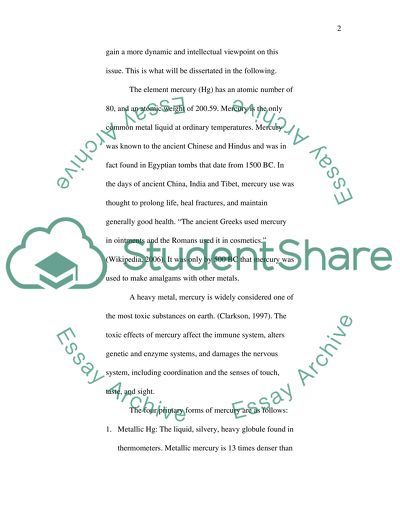Cite this document
(“Mercury: A Toxicological Review Essay Example | Topics and Well Written Essays - 2500 words”, n.d.)
Mercury: A Toxicological Review Essay Example | Topics and Well Written Essays - 2500 words. Retrieved from https://studentshare.org/science/1511262-mercury-a-toxicological-review
Mercury: A Toxicological Review Essay Example | Topics and Well Written Essays - 2500 words. Retrieved from https://studentshare.org/science/1511262-mercury-a-toxicological-review
(Mercury: A Toxicological Review Essay Example | Topics and Well Written Essays - 2500 Words)
Mercury: A Toxicological Review Essay Example | Topics and Well Written Essays - 2500 Words. https://studentshare.org/science/1511262-mercury-a-toxicological-review.
Mercury: A Toxicological Review Essay Example | Topics and Well Written Essays - 2500 Words. https://studentshare.org/science/1511262-mercury-a-toxicological-review.
“Mercury: A Toxicological Review Essay Example | Topics and Well Written Essays - 2500 Words”, n.d. https://studentshare.org/science/1511262-mercury-a-toxicological-review.


